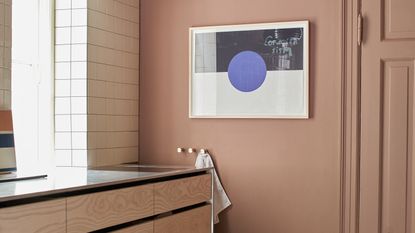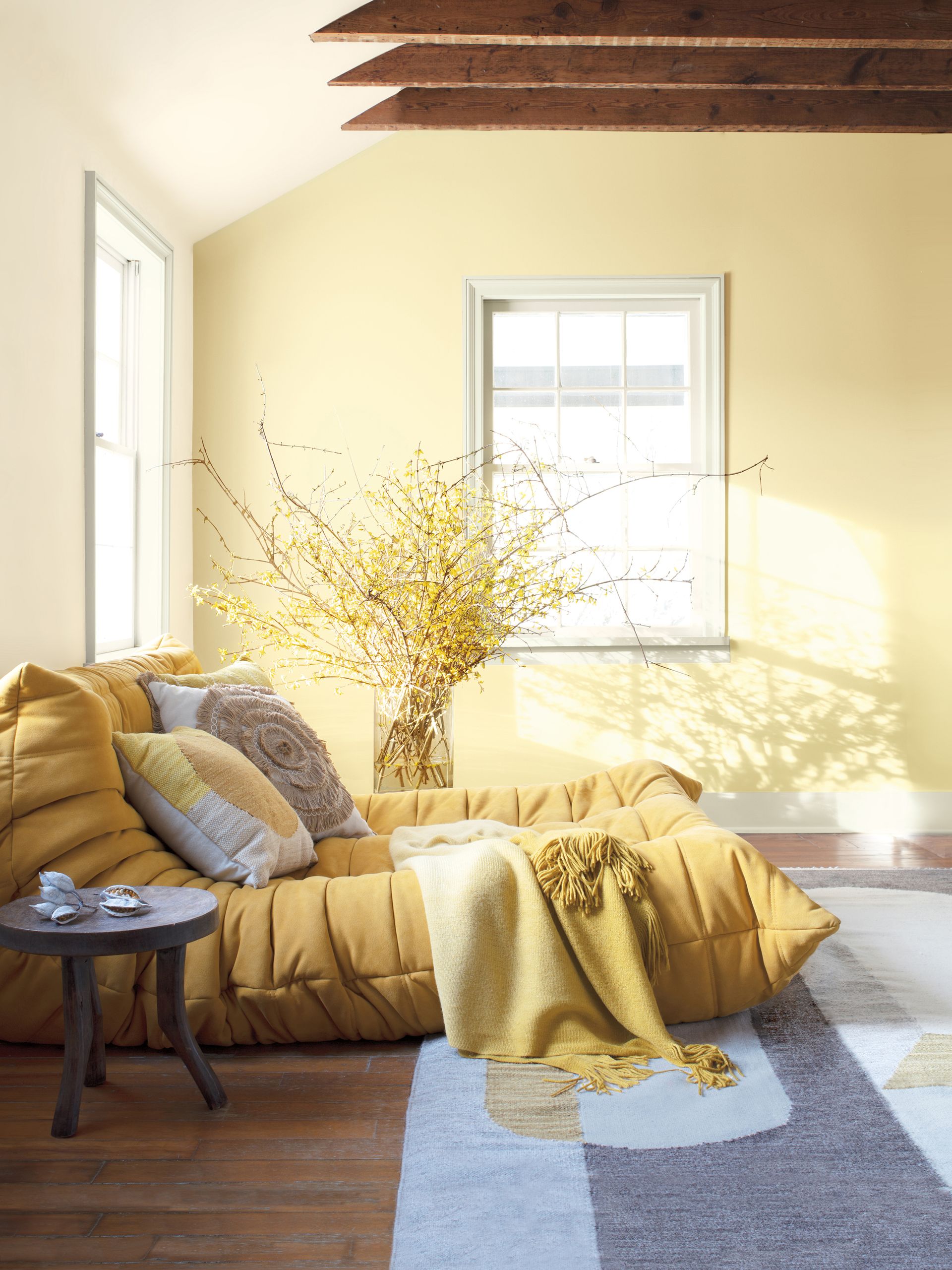How to color match paint on walls – experts tips to reverse-engineer your room's palette
Color matching makes it possible to paint your home in a precise shade. From color mixing to DIY sampling and apps, the experts explain how


There's nothing more satisfying than repainting your home. Sometimes we want to experiment with a brand new paint color while other times it might simply involve a fresh lick of paint on your existing walls. If the latter is the case and you don't have the original tin of paint stowed away in a cupboard, knowing how to color match the paint on your walls can prove tricky.
As the name suggests, color matching is the process of matching a paint color to the exact same existing shade on your walls – or at least the closest possible match. In an ideal world, you'd know the precise name and brand of every paint color used in your home, but life isn't that easy. Years pass and we forget the names, or we throw out old paint tins without noting them down.
Perhaps you've moved into a new home and rather than redecorate, you'd prefer to keep the complimentary paint color ideas that the previous homeowners chose so well. If you're hoping to keep the same beautiful tones on the walls while still giving them a fresh coat, or just give a wall a little touch up, this is where color matching comes in.
There are several different ways to color match paint on the wall. Traditionally, it involved taking a small paint chip to a paint specialist for them to identify, or the more budget method of color matching yourself with a few similar samples and testing them on your wall. These days there are also several color matching tools and apps powered to do the work for us. But which is the most reliable? We've asked the experts.

Lilith is an expert at following news and trends across the world of interiors. She's committed to helping readers make the best choices in their homes through writing practical tips and guides to help inform their design choices. For this piece she spoke with paint experts to learn all there is to know about color matching.
How do you color match paint on walls?
You know how to paint a wall, but do you know the best way to color match the paint on them? As with most topics, the experts are divided on an answer - the short answer is, whichever works best for you. However, it's worth bearing in mind that the accuracy of color matching will probably depend on how recently you painted your walls.
A modern color from a contemporary brand will be far easier to match with a paint chip as the color will be more accurate and the exact shade is likely to exist. Whereas, an older color that's faded over time or originates from a brand that's no longer manufacturing paint will be more difficult to match, unless it's professionally mixed.
'It's important to remember that paint matching by eye is subjective to everyone, the most accurate way to color match is either by using a color scanning machine,' says Lick's specialist decorator and color consultant, Alex Glover.
He continues: 'But the more traditional way, which is arguably more accurate, is by using a standard painting mixing machine. Once the RAL number has been found this will contain which pigments and what quantities of them are needed to be added to the white base.'

How to color match at home using samples
If total accuracy isn't vital to you, you could color match using paint samples at home. Start by purchasing several samples that look similar to your original color. Find a hidden spot on your wall, such as behind the bed or a chest of drawers, and paint the samples in a small area.
'Have a few separate trays of paint so you can add a lighter or darker color to the color you’re trying to match,' says Alex. 'I would recommend making a small mixture with either white if it’s lighter or if you’re trying to achieve darker, warmer tones then a brown or grey. Then apply small patches in a hidden area till it matches.'
Designer Lucinda Chambers' more unconventional way of testing paint samples involves larger swatches to give you a better idea of how they look in different light. As long as you don't mind putting up with blotchy walls for a while, this method might help you match your colors more accurately as it will probably allow you to see them in both direct, shaded and artificial light.
How to get a professional color match
Some larger hardware stores allow you to get a professional paint match through a color mixing service. 'Valspar’s colour matching technology can scan, match, and mix any color the eye can see: that’s 2.2 million shades,' says Tobie Lewis, Head of Marketing, Brand and Digital Communications at Valspar paints.
'This means that whether you’ve forgotten the name of the color you decorated your room with, or you want to color drench your living room with the exact same tone as the sofa, Valspar can easily create your custom color of choice,' he adds.
To do this, you can visit any B&Q store in the UK with a small sample (at least 0.2 inches) and the Valspar team will generate a unique color formula in their interior or exterior paint. Stores in the US, such as Ace, also offer custom paint matching.
How to color match white
If you think there's only one shade of white, think again. Just like any other color, there are a plethora of different whites from warm tones to cooler ones, making it especially hard to match.
'With whites and off whites, they all have different undertones,' explains Alex. 'These undertones can be achieved by adding pigments, for example grey can be achieved by adding a black pigment to white paint and beige can be achieved by adding a brown and ochre pigment to white.'
So, the secret to matching white on your walls is to slowly mix pigment to (in the same method Alex explains above) until you find the closest match. 'With patience, these subtle variations to white paint made by using pigments will help to achieve your ideal white,' Alex adds.
What are color matching tools and how do they work?
There are also color matching tools available from Amazon, such as the Nix mini 2, that allow you to scan any object or surface to find its exact paint match or digital color value (RAL number). The color sensor from Nix is a portable tool that sends the data to your phone allowing you to then find the matching color on an app.
There are also color matching interior design apps like the Dulux Visualizer app, which allows you to get the closest match from over 1,200 of Dulux's colors, or Sherwin Williams' ColorSnap, which works in a similar way. Most apps only display matches in a certain paint brand however, so they're not as reliable since the matching options are limited.
Be The First To Know
The Livingetc newsletter is your shortcut to the now and the next in home design. Subscribe today to receive a stunning free 200-page book of the best homes from around the world.

Lilith Hudson is the News Editor at Livingetc, and an expert at decoding trends and reporting on them as they happen. Writing news, features, and explainers for our digital platform, she's the go-to person for all the latest micro-trends, interior hacks, and color inspiration you need in your home. Lilith discovered a love for lifestyle journalism during her BA in English and Philosophy at the University of Nottingham where she spent more time writing for her student magazine than she did studying. After graduating, she decided to take things a step further and now holds an MA in Magazine Journalism from City, University of London, with previous experience at the Saturday Times Magazine, Evening Standard, DJ Mag, and The Simple Things Magazine. At weekends you'll find her renovating a tiny one-up, one-down annex next to her Dad's holiday cottage in the Derbyshire dales where she applies all the latest design ideas she's picked up through the week.
-
 What are the Most Comfortable Pillowcases? From Temperature Regulating to the Best for Your Skin
What are the Most Comfortable Pillowcases? From Temperature Regulating to the Best for Your SkinWhen you're looking for comfort in your pillowcases, material matters. These are the best you can buy
By Faaizah Shah Published
-
 5 Simple, but Genius Bathroom Layout Tricks That Will Make Your Space Work so Much Harder
5 Simple, but Genius Bathroom Layout Tricks That Will Make Your Space Work so Much HarderSmall switches to how you lay out your bathroom that help make the most of a small space
By Luke Arthur Wells Published

